
Lubricant Oil Refinery
500,000 - 1,000,000 Per plant
100 TPD (MOQ)

Vegetable Cooking Oil Refinery Plant
Get Price Quote
1 Piece (MOQ)
We are manufacturer, exporter & supplier of Vegetable / Cooking Oil Refinery Plant. As per the today’s market research it is being concluded that the market demands the refined edible oil with characteristics such as blend flavour and odour, clear appearance, light colour, long shelf life, suitable for frying since the crude oil obtain does contain many harmful factors like free fatty acid, sediments, gums, odoriferous compound and other impurities. GOYUM with an experience of more than 5 decades in the Edible oil industry have worked unremittingly in more than 60 countries of the world and have developed overall solutions for the Edible oil refinery needs of the customers. GOYUM provides complete solution for Vegetable / Cooking Oil Refinery Plant, capacity to design, build and supply plants from 5 - 30 TPD Batch Type & 50 - 500 TPD Continuous Type Refinery. Edible Oil Refinery Plant Process : Degumming Neutralization Efficient Removal of hydratable and non-hydratable phosphatides Improve physical stability Require low utility consumption Efficient Design Less maintenance cost Better process Bleaching Remove colouring pigments, traces of gums and metallic impurities Improve physical appearance Lower Bleaching earth consumption Uniform mixing of oil and earth Maintenance free Bleacher No dead area in Bleacher No carryover to Vacuum System Lower percentage of oil in Spent Cakes Dewaxing / Winterization Remove small quantity of solid from oil Efficient removal of waxes and saturated glycerides. Maximum heat transfer area of Crystallizer Perfect cooling profile Step cooling for complete granulation Deodorization Efficient removal of more volatile component like Free fatty acids, minor amount of colouring pigments Remove odoriferous compound Remove minor amount of colouring pigments Maximum heat transfer area Lower utility consumption Maximum Heat Recovery Zero contamination Elaborated and efficient design for the removal of fatty acid in Physical type DEO Longer shelf life of oil Very Low Maintenance.
Best Deals from Petrochemical Refineries
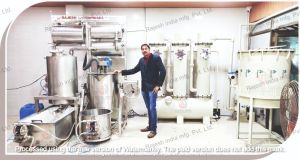
Silver Refining Plants
900,000 - 850,000 Per Piece
1 Piece (MOQ)
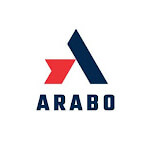
Silver Refining Plants
Get Price Quote
Biodiesel LDO, Industrial Processing Diesel, Base Oil, Biodiesel Oil

Edible Oil Refinery Plant
4,000,000 Per Piece
1 Piece (MOQ)
Features Low neutral oil loss Consistent and superior quality output Robust equipments and Machinery Long life of the plant Most economical price Lowest possible utility consumption

Edible Oil Refinery Plants
5,400,000 - 6,000,000 Per PLANT
1 Piece (MOQ)
We are the leading supplier of Edible Oil Refinery Plant made from high quality material at competitive prices.

Mineral Water Treatment Plant For Refining & Petrochemical Industry
Get Price Quote
1 Piece (MOQ)
We have advanced packaging systems available to make sure that the products are packed using the experts approved packaging stuff. We source the material from the leading vendors in the industry. Be it online payment processing or offline payment processing, we are capable of executing both as per your convenience. We take care of all your transactions made; by this, we make all the procedures transparent. Water treatment solutions to meet the specific needs of the refinery and petrochemicals sectors : Reliability of supply of process water Treatment of water loaded with organic pollution and specific compounds (mercaptans, sulphides) Elimination of heavy metals Recycling of used water Network maintenance/preservation Treatment of sludge We have a complete range of water treatment solutions for the production of cooling water, process water and boiler water, and the treatment of effluent loaded with hydrocarbons, ballast water, water from contaminated water tables, etc.The production of process water (cooling, demineralised, boiler water) : By demineralisation to eliminate the salinity of boiler water By filtration in order to reduce the quantity of suspended matter for process water By ultrafiltration for the complete elimination of particles (bacteria, parasites, viruses, organic molecules and colloids) The treatment of water loaded with hydrocarbons and recycling: by the API, CPI, DAF, DCI, DGF, DNF processes by biological processes to eliminate COD and suspended matter content from diluted effluent by MBR, combining aerobic digestion with separation by ultrafiltration membranes, to eliminate organic pollution by a physical/chemical finishing process to eliminate heavy metals and allow the reuse of the water by reverse osmosis to recycle the effluent Furthermore, we offer a full range of services that cover the complete processing of your water treatment installations, the maintenance, technical assistance and the location of mobile water treatment units to meet any temporary needs (emergencies, maintenance, etc.).

Mineral Water Treatment Plant For Refining & Petrochemical Industry
Get Price Quote
We have advanced packaging systems available to make sure that the products are packed using the experts approved packaging stuff. We source the material from the leading vendors in the industry. Be it online payment processing or offline payment processing, we are capable of executing both as per your convenience. We take care of all your transactions made; by this, we make all the procedures transparent. Water treatment solutions to meet the specific needs of the refinery and petrochemicals sectors : Reliability of supply of process water Treatment of water loaded with organic pollution and specific compounds (mercaptans, sulphides) Elimination of heavy metals Recycling of used water Network maintenance/preservation Treatment of sludge We have a complete range of water treatment solutions for the production of cooling water, process water and boiler water, and the treatment of effluent loaded with hydrocarbons, ballast water, water from contaminated water tables, etc.The production of process water (cooling, demineralised, boiler water) : By demineralisation to eliminate the salinity of boiler water By filtration in order to reduce the quantity of suspended matter for process water By ultrafiltration for the complete elimination of particles (bacteria, parasites, viruses, organic molecules and colloids) The treatment of water loaded with hydrocarbons and recycling: by the API, CPI, DAF, DCI, DGF, DNF processes by biological processes to eliminate COD and suspended matter content from diluted effluent by MBR, combining aerobic digestion with separation by ultrafiltration membranes, to eliminate organic pollution by a physical/chemical finishing process to eliminate heavy metals and allow the reuse of the water by reverse osmosis to recycle the effluent Furthermore, we offer a full range of services that cover the complete processing of your water treatment installations, the maintenance, technical assistance and the location of mobile water treatment units to meet any temporary needs (emergencies, maintenance, etc.).
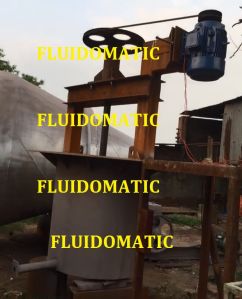
Lead Refining Plant
Get Price Quote
The Lead Bullion is fed into a refining kettle. Lead bullion contains many other metallic impurities including antimony, arsenic, copper, tin and zinc. Refining Process of Lead in Detail : Removal of Copper : Copper is the first of the impurities to be removed. The lead bullion is melted at about 300–600 °C and held just above its melting-point when solid copper rises to the surface and is skimmed off. Sulfur is stirred into the melt to facilitate the operation by producing a dry powdery dross which is more readily removed. Once copper has been removed, there are a number of processes available for the extraction of the other impurities from the bullion. These include, in which elements are removed one or more at a time in several stages. Removal of antimony, arsenic and tin : After the removal of copper, the next step is to remove antimony, arsenic and tin. There are two methods available — the softening process (so-called since these elementsare standard hardeners for lead) and the Harris process. In the softening process, the lead bullion is melted and agitated with an air blast, causing preferential oxidation of the impurities which are then skimmed off as a molten slag. In the Harris process, the molten bullion is stirred with a flux of molten sodium hydroxide and sodium nitrate or anothersuitable oxidizing agent. The oxidized impurities are suspended in the alkali flux in theform of sodium antimonate, arsenate and stannate, and any zinc is removed in the form of zinc oxide. Removal of silver, gold & Bismuth : After the removal of antimony, arsenic and tin, the softened lead may still containsilver and gold, and bismuth. The removal of the precious metals by the Parkesprocess is based on the fact that they are more soluble in zinc than in lead. In this process,the lead is melted and mixed with zinc at 480 °C. The temperature of the melt is graduallylowered to below 419.5 °C, at which point the zinc (now containing nearly all the silverand gold) begins to solidify as a crust on the surface of the lead and can be skimmed off.An alternative procedure, the Port Pirie process, used at the Port Pirie refinery in Australia,is based on similar metallurgical principles. Removal of zinc : The removal of the precious metals leaves zinc as the main contaminant of the lead.It is removed either by oxidation with gaseous chlorine or by vacuum distillation. Thelatter process involves melting the lead in a large kettle covered with a water-cooled lidunder vacuum. The zinc distils from the lead under the combined influence of temperatureand reduced pressure and condenses on the underside of the cold lid.Refined lead is poured into moulds and ingots are formed. These ingots are then sent to storage. For integrated Production of Lead Oxide, Refined Lead is casted into Balls. (to be fed directly to Lead oxide Ball Mill). About Lead Refining : Lead recycled from used lead acid batteries or other sources (Secondary Smelting) via the Mini Blast Furnace or Rotary Furnace route, contains lot of contamination and undesired components. On the other hand, Lead required for battery manufacturing is either soft Lead with 99.97% purity or hard Lead of varying Antimony compositions.In order to make quality of lead suitable for its different uses,different variations of pot melting processes are employed. These includes : “Re-Melting” for removal of slag, “Refining” for attaining required purity levels and “Alloying” for producing various alloys of lead. The equipment used is the same, the consumables and the processes, however, differ. Refining Pot Details : The Refining Pot (or Refining Kettle or Alloying Pot, as it is variously called), is a mechanical mixing device with a pot and a heating arrangement. The inner pot is made of heavy MS plate with dish end bottom. It is placed within a jacket of refractory bricks, which in turn, are protected by an outer cover of MS plate with reinforcements. The pot is covered at the top with opening for feeding lead ingots and is provided with an electro-mechanical mixer. At the bottom, a heating source, usually an oil fired/ Diesel burner& sometimes by Wood burning is provided to heat the pot and to melt the lead. Once lead melts, impurities are skimmed and removed and any consumables required are added. Lead is then drained from the pot through an outlet pipe and valve. Capacity of such pots depends upon the requirements of particular units. Standard pot capacities made are from 3.0 Tons per Batch to20.0 Tons per Batch. Higher capacity pots are also manufactured as required by any particular establishment. Melting pots are installed both with and without accessories which may include Ingot Casting Machine, Ball Making Machine (where Ball Mills are installed down the line), Air Pollution Control Systems, Jib Cranes etc.Production Process :Melting Processes have been grouped as Re-Melting Process Refining Process Alloying Process Re-Melting Process : This process is undertaken for value addition to the recycled lead from furnaces. Lead is melted in the pot and major impurities are skimmed from it to make it saleable in the market.Refining Process : Lead is melted in the pot, additives such as Sulphur, Wooden Powder and Coke Breeze are added and mixed gently followed by dross removal. Thereafter, Tin is added to remove Copper and temperature is increased to 550-6000C. Further, additives such as Sodium Nitrate & Caustic Soda are added to remove Antimony. This process is repeated to get the desired purity of lead. Alloying Process : Lead is melted in the pot; additives such as Sulphur, Wooden Powder & Coke Breeze are added and mixed gently followed bydross removal. Thereafter, Tin & Antimony are added to the liquid metal to get the desired grade of Lead.Melting processes lead to generation of air pollution at the following stages : Initial heating and melting generates fumes Drossing with sulphur, wooden powder and coke breeze generates lot of smoke and dust particles Further heating for Refining and Alloying with different chemicals generates fumes and dust particles. Hence, to meet various goals of maintaining employees' health, factory environments as well as regulatory requirements, it becomes imperative to get high end Air Pollution Control Systems to be installed with the Melting Pots.Characteristics of Air Pollution generated in Melting Pot : Dust : 500-600 mg/Nm3 Temperature : 60-80° C Gases : Fumes and Dust Discharge Characteristics required as per Norms : Dust - Less than 50 mg/Nm3 Lead ( Pb) - Less than 10 mg/Nm3 Temperature - 50-60° C Gases - Not Detectable Selection & Detailson Technology for Air Pollution Control : Based on the Parameters and the Standards mentioned, the following technology is adopted for Air Pollution Control Systemin Melting Pot is Pulse Jet based Bag House Filtration System

Biodiesel Plant
Get Price Quote
Bio Diesel Extraction Plant For every type of edible/non edible oil, we engineer and develop Bio-Diesel extraction Plant. In our range, we have different capacities of extraction plants ranging from 500 liter/day. In addition to this, transesterification plant comprises of reaction tank, catalyst mixture, washing system and settling tanks and methanol recovery. Bio-diesel is the product obtained by transesterification of any vegetable oil. Derived from renewable lipid sources, biodiesel is defined as the mono alkyl esters of long chain fatty acids. In the presence of a catalyst, the reaction of a vegetable oil or animal fat with methanol is carried out to yield glycerin and biodiesel. Details : For use in compression ignition engines, bio-diesel is an alternative fuel that can be used in neat form, or combined with petroleum diesel. Used a fuel in diesel engine, the chemical and physical properties are similar to petroleum based diesel fuel. We have experience of years in offering highly advanced and sophisticated transesterification unit, which is widely used in agro industries involve processing and extraction of bio-diesel. Through these units, bio-diesel is produced in bulk quantity for use in the commercial market as an automobile fuel. The machines involve highly sophisticated and PLC based processes. Post the extraction of pure diesel, the by-products left over like glycerol is also marketable. Depending on the requirement of clients, these units can be offered in various capacities.

Biodiesel Machinery
Get Price Quote
Payment methods that we offer to our clients are authorized and maintain complete confidentiality of clients' information. With us, one can make payment using cash and bank transfers. Seeking a trusted Biodiesel Machinery supplier? Our organization is the best one and able to fulfill wholesale orders.

Coconut Oil Fractionation Plant
2,500,000 Per piece
The fractionation of coconut oil is carried out by heating the oil above its melting point. Then, it's left to cool, and the solid fraction of the oil is separated from the liquid. The whole process of fractionation can take several hours. A process called fractionation is used to produce fractionated coconut oil.

Lead Refining & Alloying Plant
3,500,000 Per Piece
1 Piece (MOQ)
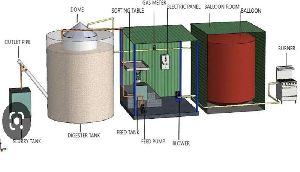
Bio Gas Plant for Corporation
Get Price Quote
1 Piece (MOQ)

Petrochemicals Plant
Get Price Quote
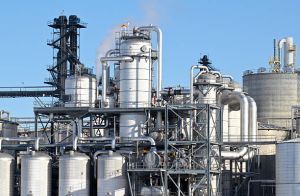
Fuel Ethanol Plant
100,000,000 - 500,000,000 Per Plant
1 Unit (MOQ)

Edible Oil Refinery Plant
1,000,000 - 1,500,000 Per piece
100 Kilogram (MOQ)
Fostechno Process and Engineering Pvt. Ltd. is a project engineering company engaged in design, manufacture & supply of plant & machineries for seed processing, oil extraction, solvent extraction, crude edible oil refining, Oleochemicals, fat modification & value additions plants on Trunkey basis. We have the facility to supply plants and machinery from capacity of 5 Ton per day to 500 Tons per day.

Neutralization Refinery Plant
Get Price Quote
We are offering neutralization refinery plant. muez-hest neutrailzation method transforms the free fatty acids into soaps. these are not any longer soluble in water and may be removed simply by decantation or force. The removal of the free fatty acids doesn't shut neutralisation, because the operation additionally eliminates the phospholipids that aren't hydrous at degumming level, and it reduces the quantity of metal traces likewise as some pigments and minorconstituents. we have a decent name as manufacturer of plant and instrumentation for refinement of oils and fats ,which is comprised of water degumming, gum learning, alkali refinement and water wash. There area unit few decisions to choose; shortlong combine method with degumming or gum learning. oils and fats having gums and ffa (free fatty acid) area unit needed to be removed by degumming & refinement method to provide quality refined oil. muez-hest provides an ideal method mistreatment centrifuges from the simplest makers. salient options are: easily transforms free fatty acids into soap removal of phospholipids that aren't hydrous at degumming level removal of metals, pigments and different volatiles. degummed oil when learning is fed into the mixer wherever it's mixed with calculated amount of hydroxide resolution of appropriate strength. Free fatty acids within the oil react with hydroxide to make soap. The mixture of oil and soap in conjunction with the precipitated gums is fed into a centrifuge to separate oil and soap stock.
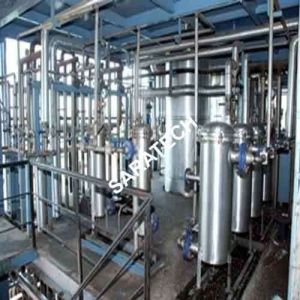
Physical Refinery Plant
Get Price Quote
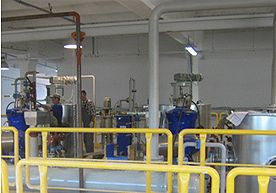
Chemical Refinery
Get Price Quote
Degumming & Neutralizing : Crude oil is delivered to the system by the Feed Pump. It is heated to 65 - 70 C in the Crude Oil Economizer by hot oil from down-stream bleaching/deodorizing operations or, when necessary, by steam in the Feed Heater mixed with pre calculated quantity of Phosphoric acid in a gum conditioning mixer the pre calculated quantity of water is added. Oil water mixture is fed to hydration tank to give sufficient residence time for gums to agglomerate on hydration. This oil is then pumped to separator where the oil and hydrated gums are separated and pumped to storage or disposal or gum drying plant in case of soybean gums. In the case of water degumming process, crude oil is heated to required temperature in the plate heat exchanger, mixed with pre calculated water through mixer and fed to the hydration tank for sufficient residence time for gums to agglomerate. Then it is pumped to separator where oil and hydrated gums are separated. Water degummed oil from separator is pumped to plate heat exchanger where oil is heated to neutralization temperature i.e. around 80 to 85 Deg C. The hot oil is fed to mixer with requisite quantity of phosphoric acid where oil and phosphoric acid is allowed a brief holding time and the precipitation of trace metals take place. Degummed oil is fed in to mixer where it is mixed with calculated quantity of caustic soda solution of suitable strength. Free fatty acid reacts with caustic soda to form soap . The reacted oil is sent to the Gum/Soap Separator . The precipitated impurities are removed from the oil as water based heavy phase referred to as soap stock. The gums/soap are collected in the Heavy Phase Receiver and sent to intermediate storage by the Heavy Phase Pump. Water Washing : The residual soap in the degummed & neutralized oil is reduced by water washing. In this case the oil from the separator is heated to about 95 C in the Washing Heater and then mixed with 10 - 15% soft water in the Wash Mixer. After a few minutes retention in the Wash Reactor the wet oil enters the Wash Water Separator. The washed oil, typically containing under 100 ppm soap and with a reduced level of phosphorus, is sent directly to bleaching as described above. The heavy phase soapy water is collected in the Recovered oil tank and drained to Effluent treatment. Vacuum drying : Washed oil is fed continuously to the Vacuum dryer and sprayed through specially designed nozzles. The vacuum dryer is kept under a vacuum of 70 torr. The dried oil from the vacuum chamber is continuously pumped out by pump to intermediate storage tank. Bleaching : The feed oil (acid conditioned, degummed / neutralized & washed) enters the Bleacher via a Bleaching heater where the oil is heated up to Bleaching temperature and discharged into the slurry mixer. A valve dosing system proportions bleaching earth. The earth is introduced under the oil spray in the mixing chamber for improved mixing so that earth does not enter the Bleaching Vacuum System. The earth adsorbs any residual gums and soap as well as trace metals, color bodies and other polar impurities. The Bleacher has multiple agitated compartments and operates under vacuum to ensure complete moisture and air removal. The dried oil and earth mixture is discharged by the Bleacher Discharge Pump to one of the Filters where the spent earth is removed. The filtered oil is collected in the Filtrate Receiver. The Bleached Oil Pump sends the oil to Deodorizing via one of the alternating Polish Filters. Filter Management : The standard bleaching system is based on the use of two filters of which one is on line while the other is being cleaned and prepared for the next cycle. When a filter has reached its maximum capacity, as indicated by high feed pressure, it is taken off line for cleaning and replaced by the other filter. The cleaning procedure begins by first pressurizing the filter with steam to expel residual oil into the Recovered Oil Tank and dry the spent filter cake. The oil recovered from the filter cake is collected in the tank and can usually be recycled to the Bleacher. After drying, a bottom discharge valve on the filter is opened and the leaves pneumatically vibrated so that the spent cake is dislodged and discharged via a hopper. The filter is then closed and readied for the next batch. Before going on line again it can be pre-coated with filter aid and/or bleaching earth in order to seal the filter leaves and minimize clogging. The adsorbents are mixed with bleached oil in the Precoat/Heel Tank and applied to the leaves by circulation with the Precoat Pump. When not using filter aid or �off-line� pre-coat, the empty clean filter is filled and put on line while the other filter is still in operation. The filtrate from the clean filter is recycled back to the Bleacher until the filter is pre-coated with bleaching earth and the oil is clear. After this the full flow is switched to the new filter. Dewaxing : After De-gumming, Neutralization, water washing, vacuum drying and bleaching the Dewaxing is done. Initially the oil is cooled by cooling tower water to around 35 Deg C , from 35 Deg C the oil is cooled by out coming chilled oil to 20 Deg C . This oil is then cooled to 8 Deg C by using Propylene glycol as cooling media. This oil is then feed to crystallizer for Crystal growth. A proper residence time is given to have a good crystal growth, after the waxes gets crystallized the oil is subjected to filtration. This dewaxed oil passes the cold test which gives clarity to oil even at lower temperature. Deodorisation : Bleached oil is continuously pumped from the Feed Tank by the Deareator Feed Pump. The oil is pre-heated in the Deaerating Economizer by outgoing deodorized oil followed by the Deaerating Heater (if necessary) before entering the Deaerator. The vessel is under full vacuum, so that residual air is reduced to an absolute minimum. The Deaerator Discharge Pump sends the oil through a Heat Economizer where the temperature is increased by hot deodorized oil. The oil is heated to full processing temperature in the Vacuum Heater by thermal fluid from the Thermal Oil Heater. A portion of the free fatty acids in the oil will be flashed off as the oil temperature increases. Stripping : The hot oil enters the Packed Column, which is filled with special structured packing so that the oil is distributed into a thin film and is evenly agitated by stripping steam flowing counter currently from the bottom of the column. As a result, free fatty acids and other remaining volatile impurities in the oil are evaporated and removed with the steam. The residence time in the column is only a few minutes. The bulk of the free fatty acids along with aldehydes, ketones etc. in the oil are quickly stripped off before any heat induced permanent damage has been done. Deodorizing : The stripped oil from the column flows into the Deodorizer where it flows through the channels of a series of vertically stacked compartments (trays) while agitated by stripping steam. The prolonged thermal action breaks down carotene and other color bodies, resulting in a lighter oil color. Also, the amount of remaining free fatty acids in the oil is reduced to an absolute minimum. The stripping steam passes through the packed column and no separate steam is required in the stripping column. The maximum retention time in the Deodorizer is 70 minutes. Cooling : The deodorized oil is discharged into the Deodorizing Economizer and cooled by incoming oil. The oil is then discharged by the Product Pump and further cooled to storage temperature in the Deaerating Economizer and Product Cooler. The anti-oxidant is mixed with oil in the Deodorizing Economizer. The finished oil is finally sent to storage via one of the alternating Product Filters. Distillate Recovery : Fatty acids and other materials, evaporated from the oil, are condensed by contact with recycled and cooled distillate in the Vapor Scrubber. The distillate is circulated by the Distillate Pump via the Distillate Cooler where it is cooled by cooling water. Accumulated distillate is discharged from the Scrubber to storage. Trans and Tocopherol : The high efficiency (low amount of stripping steam) and short retention time of the stripping column, combined with the possibility to reduce the heat bleaching time or temperature, ensure optimum conditions for controlling the process. The oil can thereby be properly deodorized without the creation of trans fatty acids while also controlling the amount of tocopherol removed from the oil. Protection against Air Contamination : For optimum quality, especially when processing unsaturated oils, the oil should be protected from air contamination during the entire deodorizing process. The packed column type Deareator ensures maximum removal of dissolved air before high temperature heating. This also helps minimize polymerization of the oil on the inside of the heat exchange coils of the heat Economizer. Process Control : The control, operation and supervision of the plant can be handled by one operator per shift. All main process parameters, if required, e.g. flow rates, temperatures, liquid levels etc. are automatically maintained from a control panel or, as an option, with the help of PID/PC based controls.